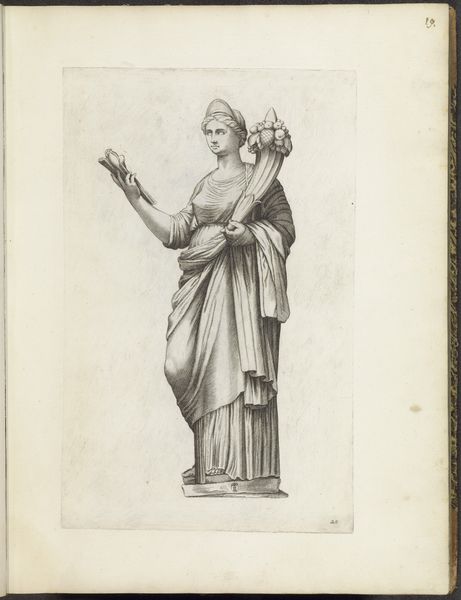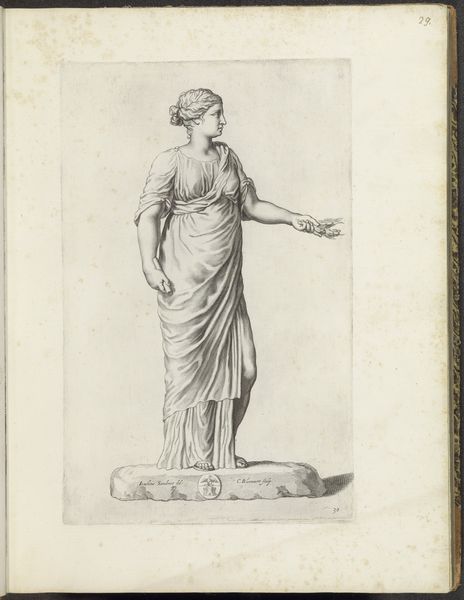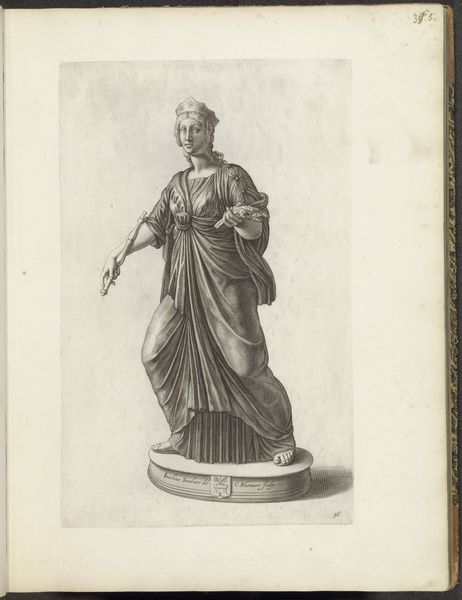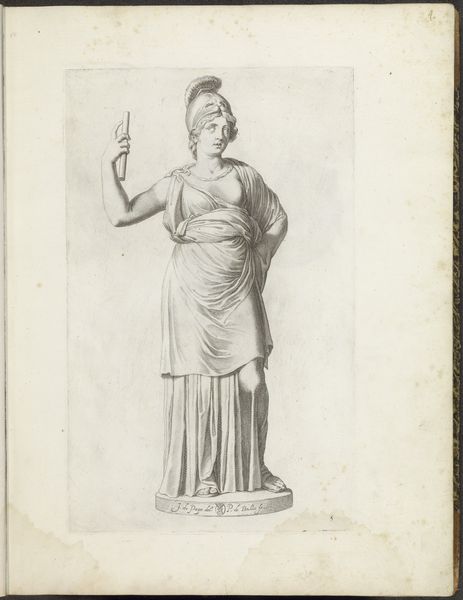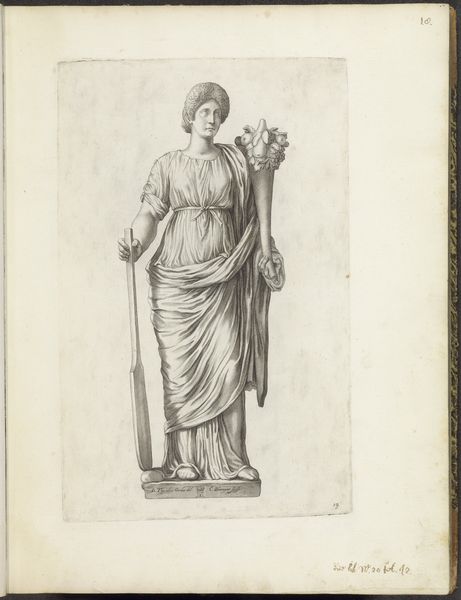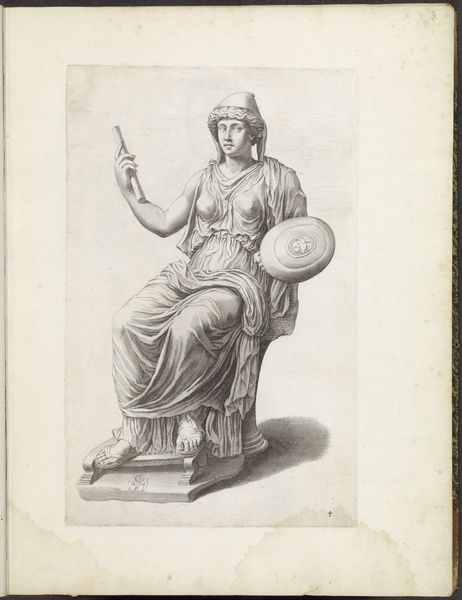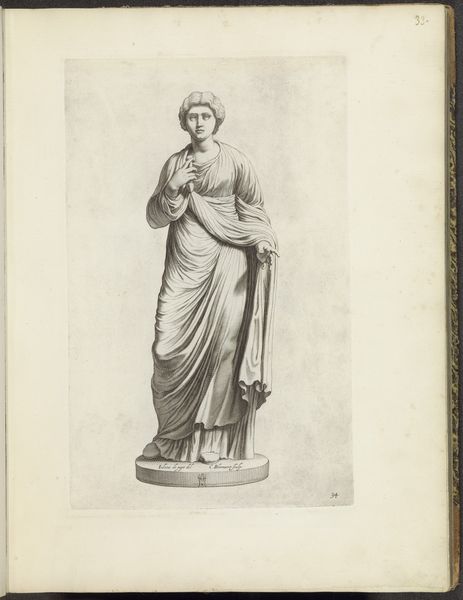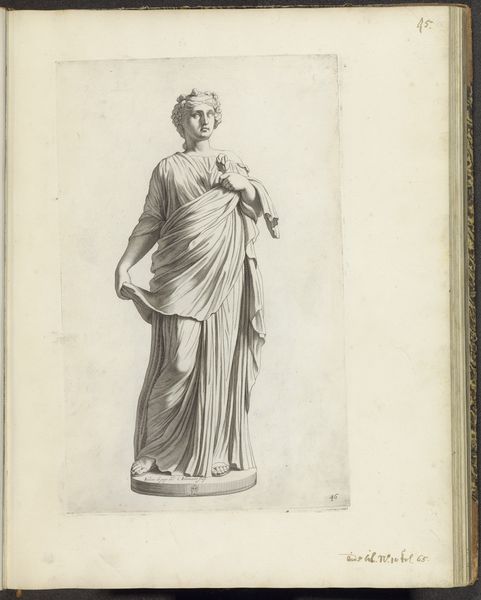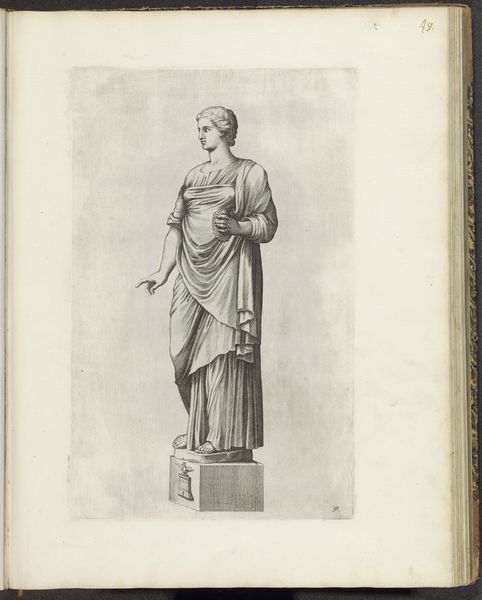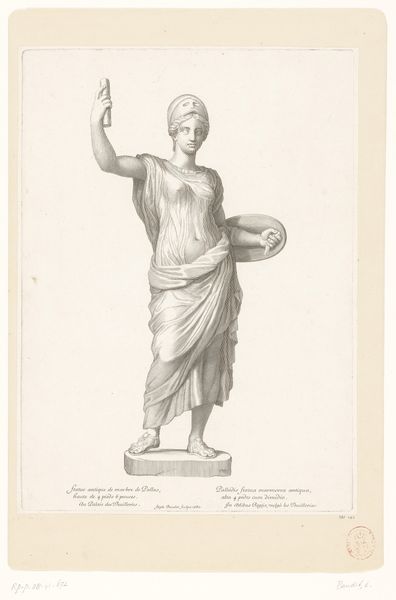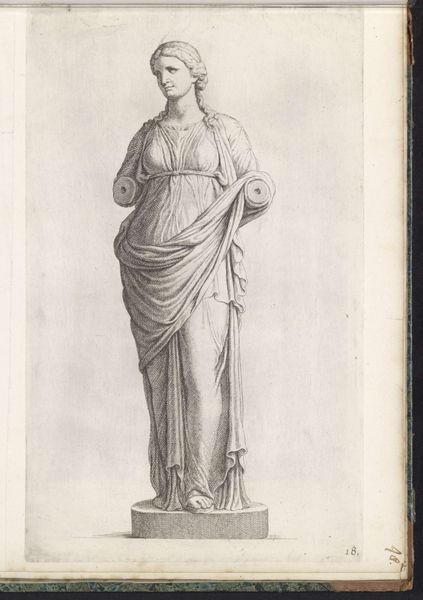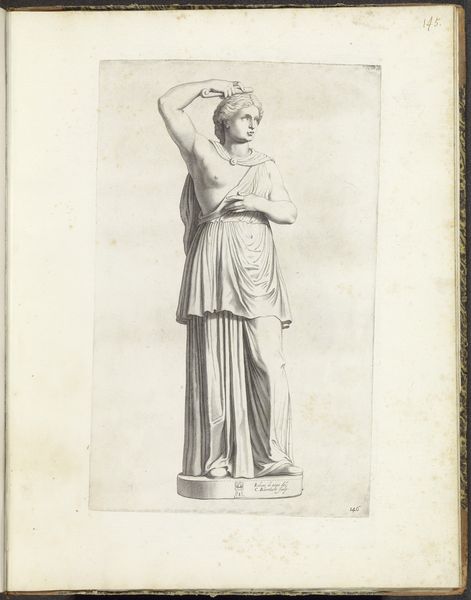
drawing, paper, pencil
#
portrait
#
drawing
#
baroque
#
pencil sketch
#
paper
#
pencil
#
pencil work
#
history-painting
#
academic-art
Dimensions: height 372 mm, width 236 mm
Copyright: Rijks Museum: Open Domain
Editor: So, here we have a pencil drawing entitled "Statue of the Goddess Roma," created between 1636 and 1647 by Cornelis Bloemaert. The shading gives her robes a wonderful weight, and I feel her expression has a very authoritative tone. What do you make of it? Curator: Authoritative is a great word! The drawing definitely captures a sense of power. It’s like Roma, the personification of Rome, is almost claiming space with that extended hand. It's also interesting to think about this as a drawing *of* a statue. Almost a copy of a copy, filtered through Bloemaert's eyes. What does that doubling do, do you think? Editor: I never thought of it that way. Does the statue influence his style, making it more classical and rigid, maybe? Curator: Perhaps! I find his almost loving attention to the drape of her robes rather interesting. Almost like he’s losing himself in the folds. It suggests an intimacy beyond just replicating a statue, a real connection with the textures and form. Editor: Now I see the softness you mean, especially around her sleeves. I also really like how the light hits her helmet. So, this isn’t just a historical record then, is it? It has Bloemaert’s touch. Curator: Precisely! And that’s the joy of these pieces. Even in replicating, artists imbue their work with something of themselves. It really asks, can an artistic copy ever truly just be a copy? Editor: Right. I definitely have a new appreciation for drawings of sculptures, it's more complex than I'd thought! Curator: Indeed. Every glance reveals something new. I'm glad we had this little journey together.
Comments
No comments
Be the first to comment and join the conversation on the ultimate creative platform.
